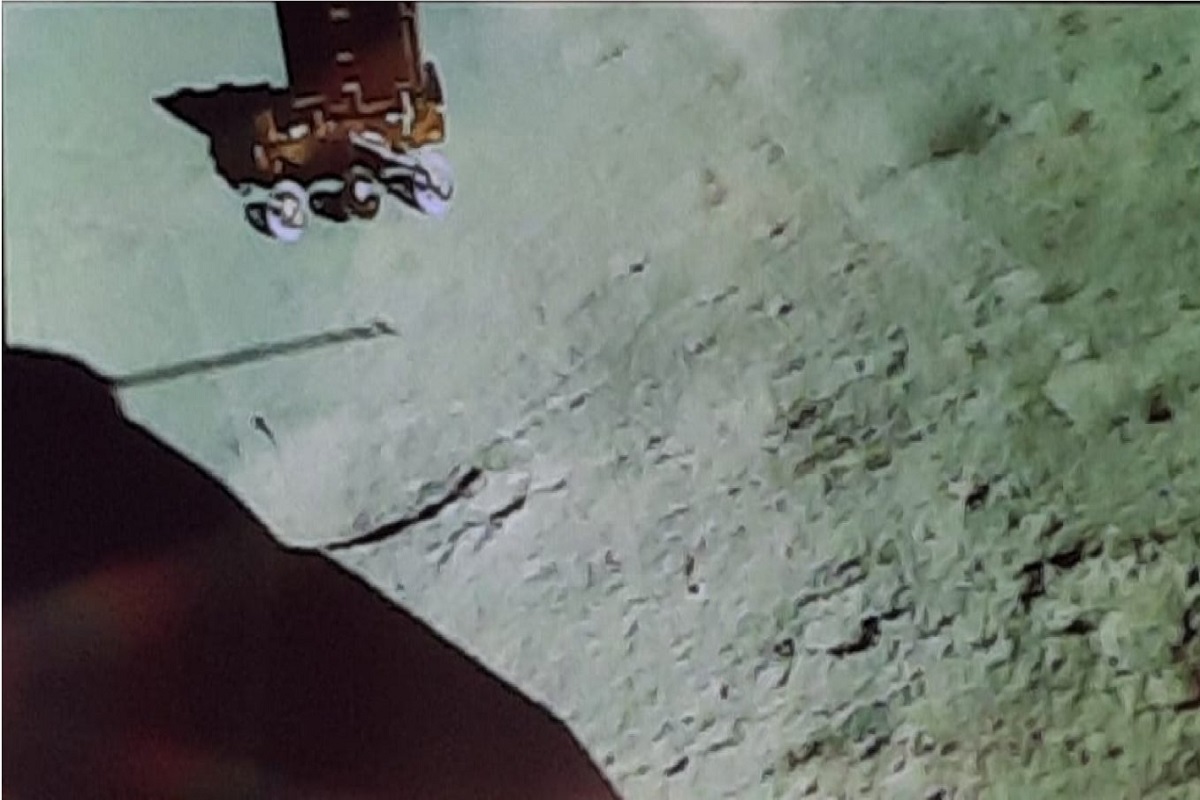Chandrayaan 3 Mission Latest Update: The Indian Space Research Organisation or ISRO Saturday said that the Pragyan rover of its Moon mission Chandrayaan 3 has been set into sleep mod after it completed its assignments on the lunar surface. The two payloads APXS and LIBS were also turned off and the rover has been parked safely on the lunar surface.
The agency further said that all the data from APXS and LIBS payloads were transmitted to the Earth via lander module Vikram. Pragyan traversed over 100 meters on the lunar surface near the south pole region.
Advertisement
“The Rover completed its assignments. It is now safely parked and set into Sleep mode. APXS and LIBS payloads are turned off. Data from these payloads is transmitted to the Earth via the Lander,” ISRO said in a tweet.
What happens next?
The journey of Chandrayaan 3’s rover Pragyan on the Moon, which started on August 23, may not end just yet. ISRO said that the solar-powered battery of Pragyan is fully charged and its solar panel is oriented to receive light at the next sunrise, which is expected on September 22.
A lunar day is equal to 14 earth days. And ISRO will now try to awaken rover Pragyan at next sunrise for next set of assignments. “Hoping for a successful awakening for another set of assignments! Else, it will forever stay there as India’s lunar ambassador,” ISRO said.
What did Chandrayaan 3 tell us?
In its first observation, the ChaSTE payload attached to Chandrayaan 3s lander Vikram recorded variations of temperature on the lunar surface. The ISRO shared a graph on X that showed the difference in temperature on the Moon’s surface and underneath.
At a depth of 8 cm, the payload attached to Chandrayaan 3’s lander Vikram recorded temperature as low as (-) 10 degrees centigrade. With the gradual rise towards the surface, the temperature too could be seen rising. Above the surface, the graph showed a relative stagnancy in temperature between 50-60 degrees centigrade.
In its second observation, the Chandrayaan 3’s rover Pragyan confirmed the presence of Sulphur on the Moon. The rover Pragyan also confirmed the presence of Aluminum, Calcium, Iron, Chromium, and Titanium on the lunar surface.
In an official statement released on its website, the ISRO said that the Laser-Induced Breakdown Spectroscopy (LIBS) instrument onboard Chandrayaan-3’s rover Pragyan made the first-ever in-situ measurements on the elemental composition of the lunar surface near the south pole region.
















